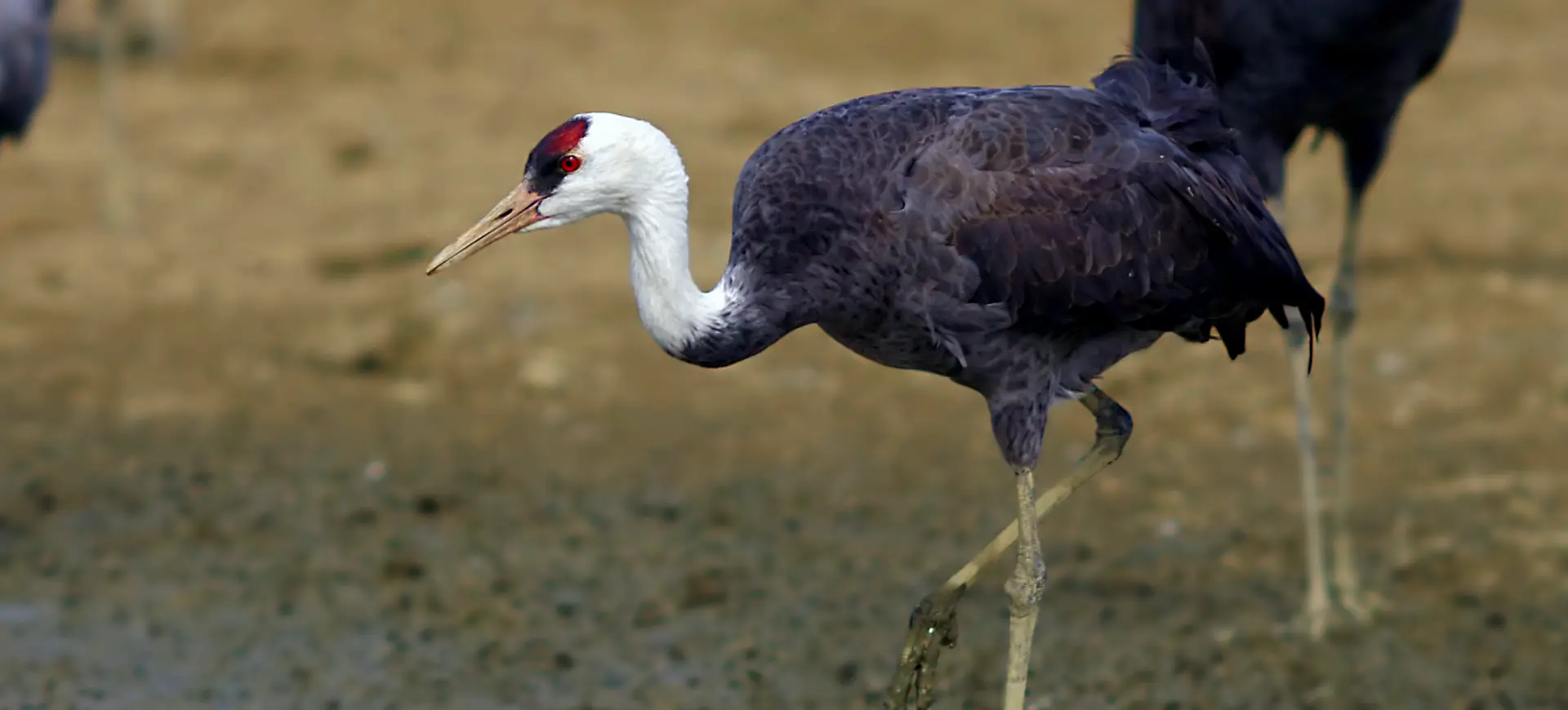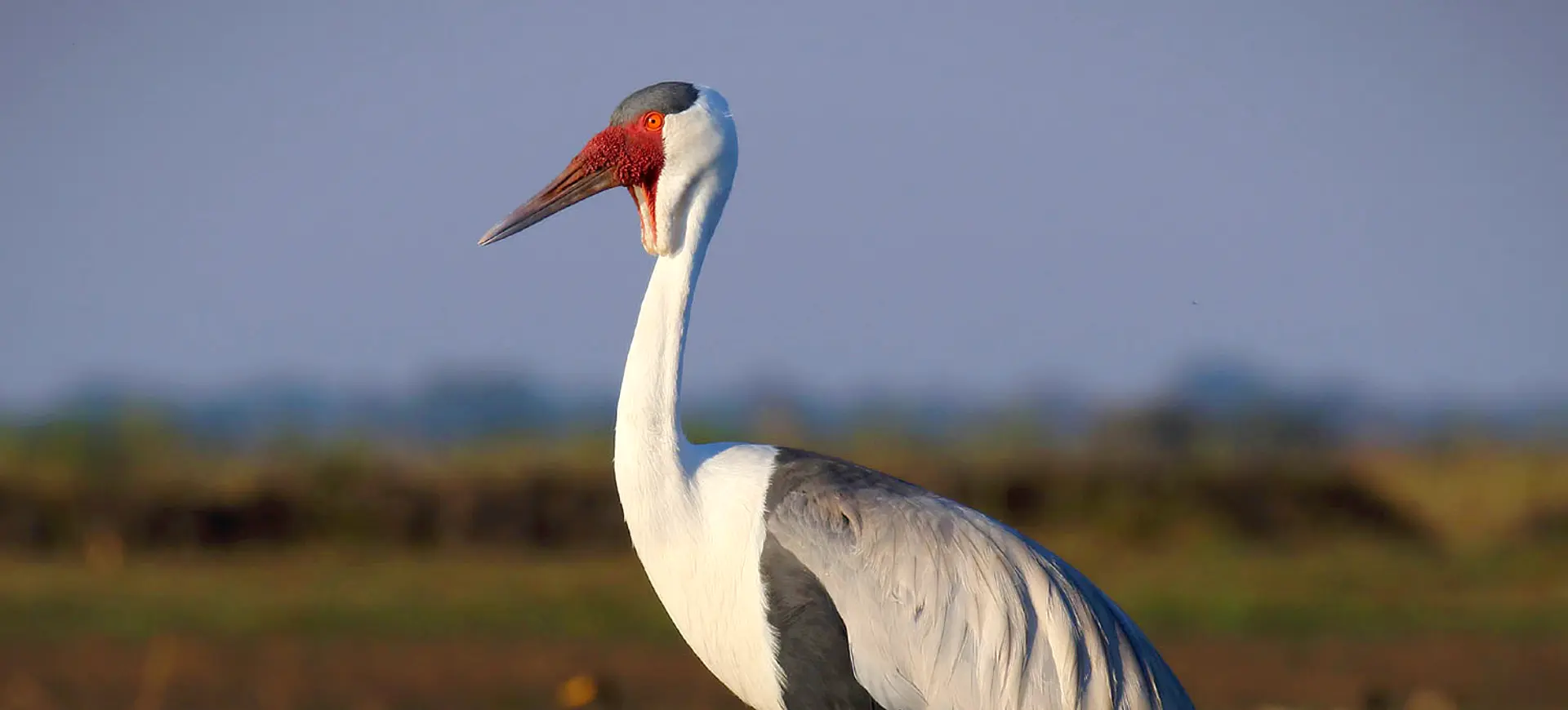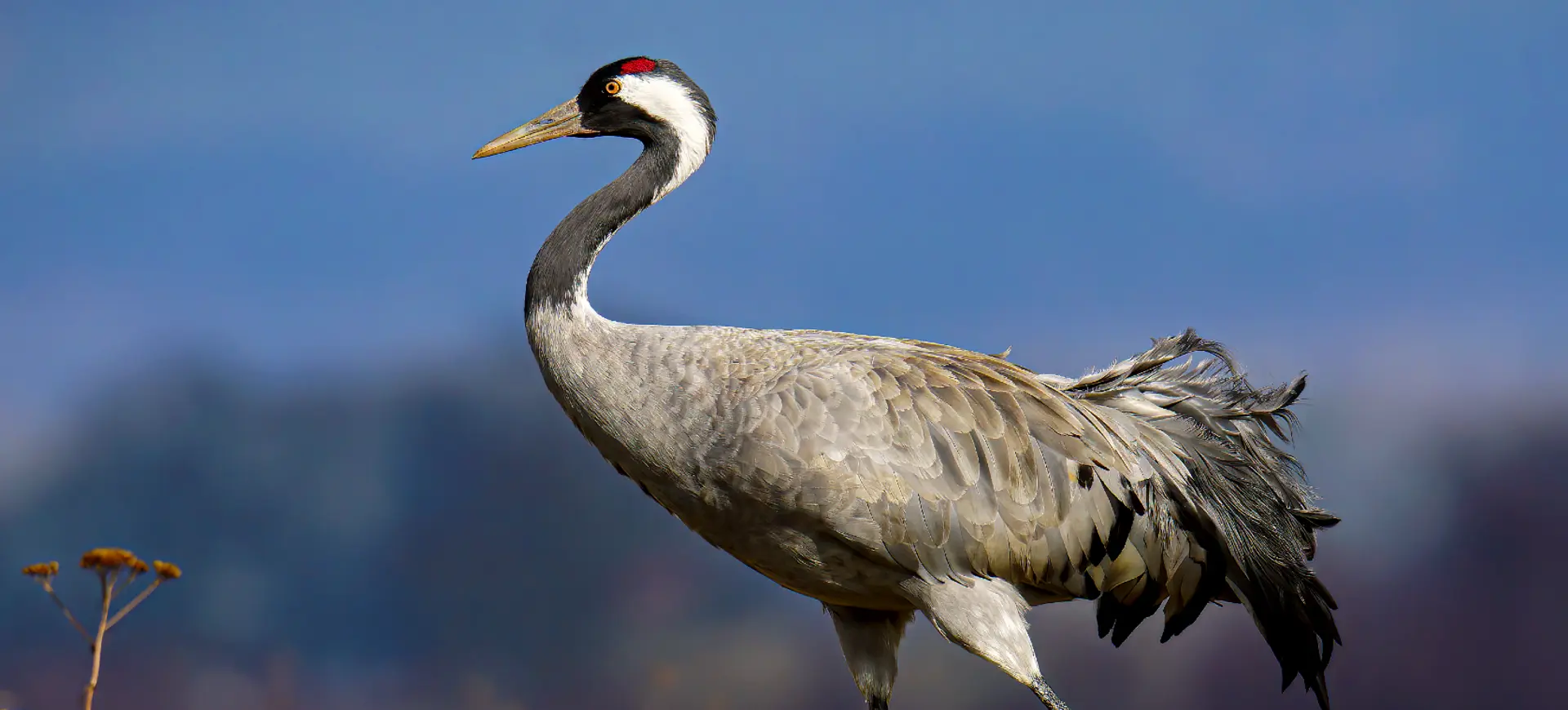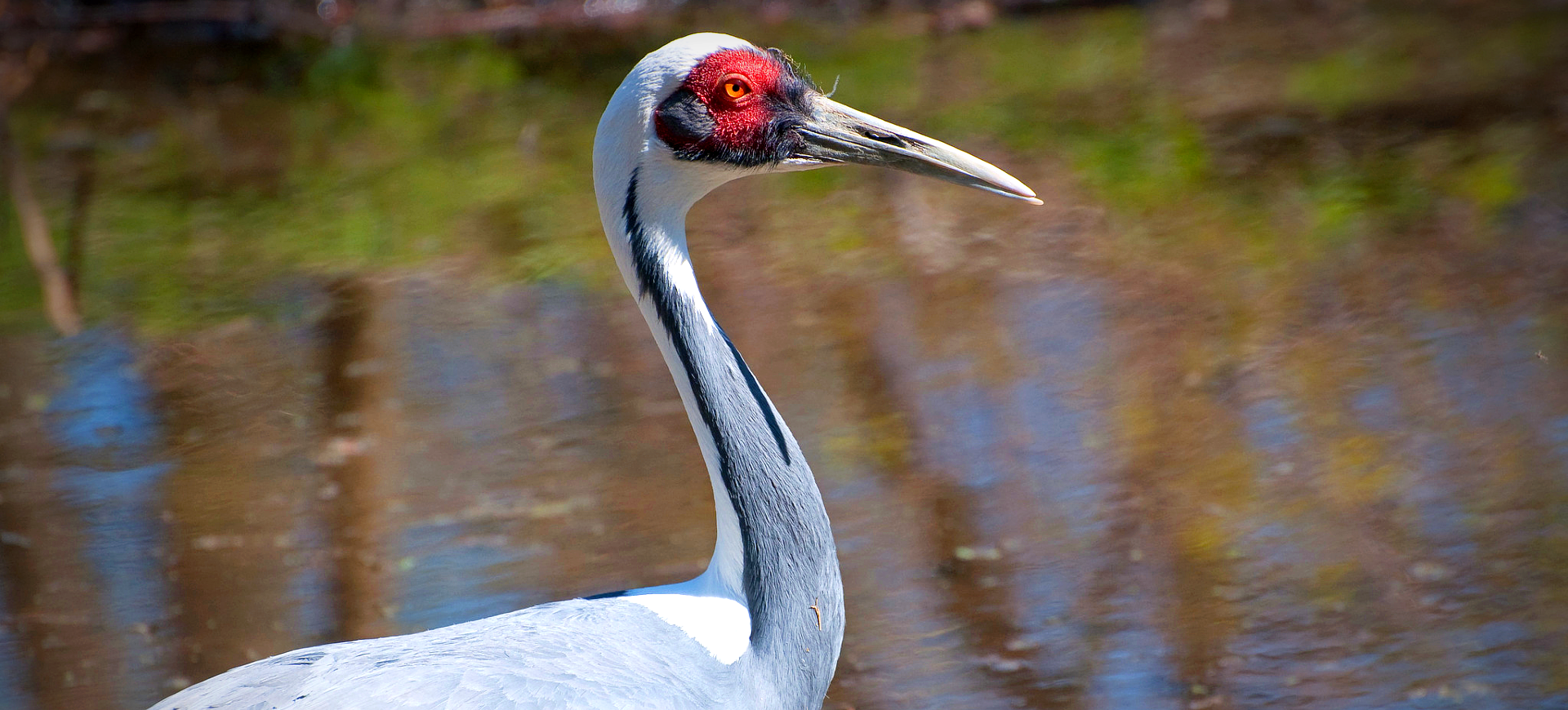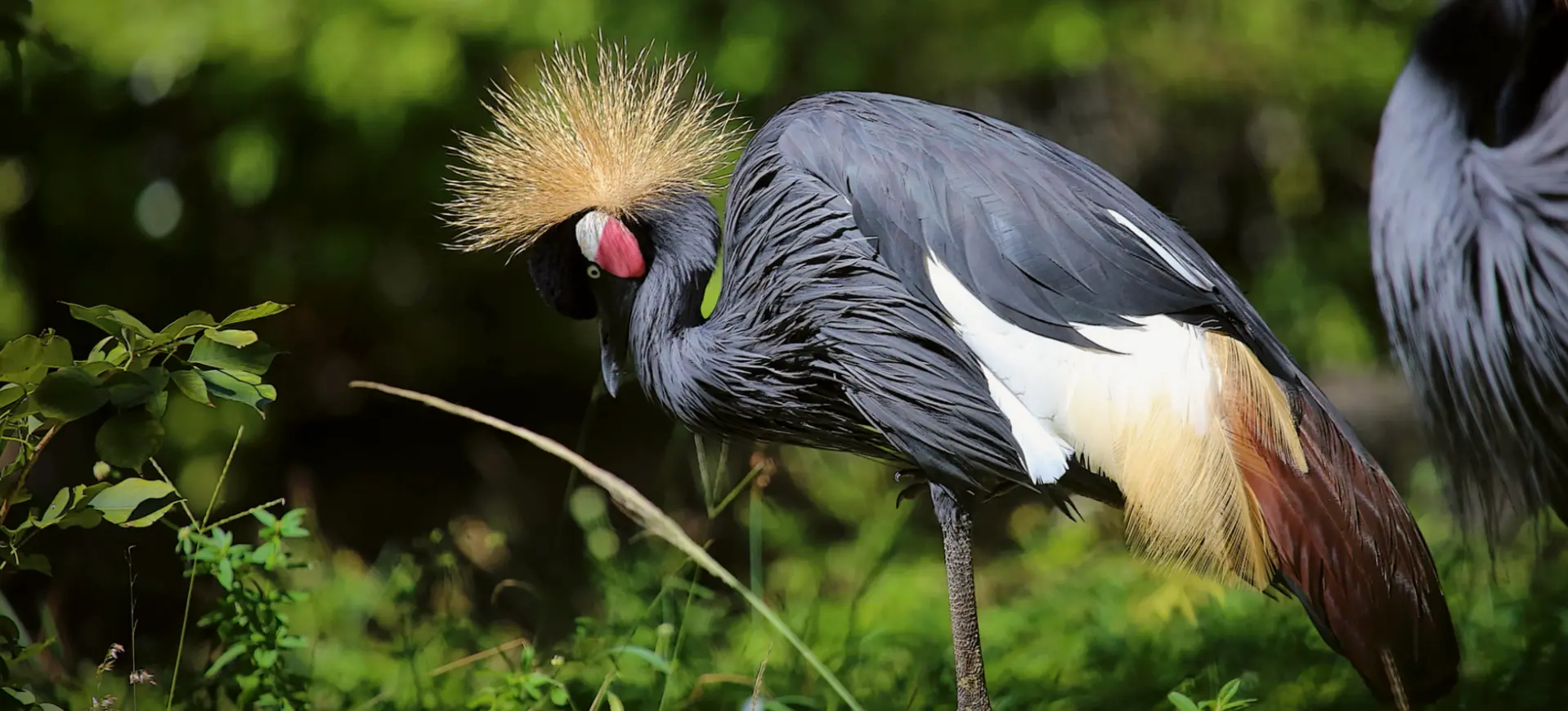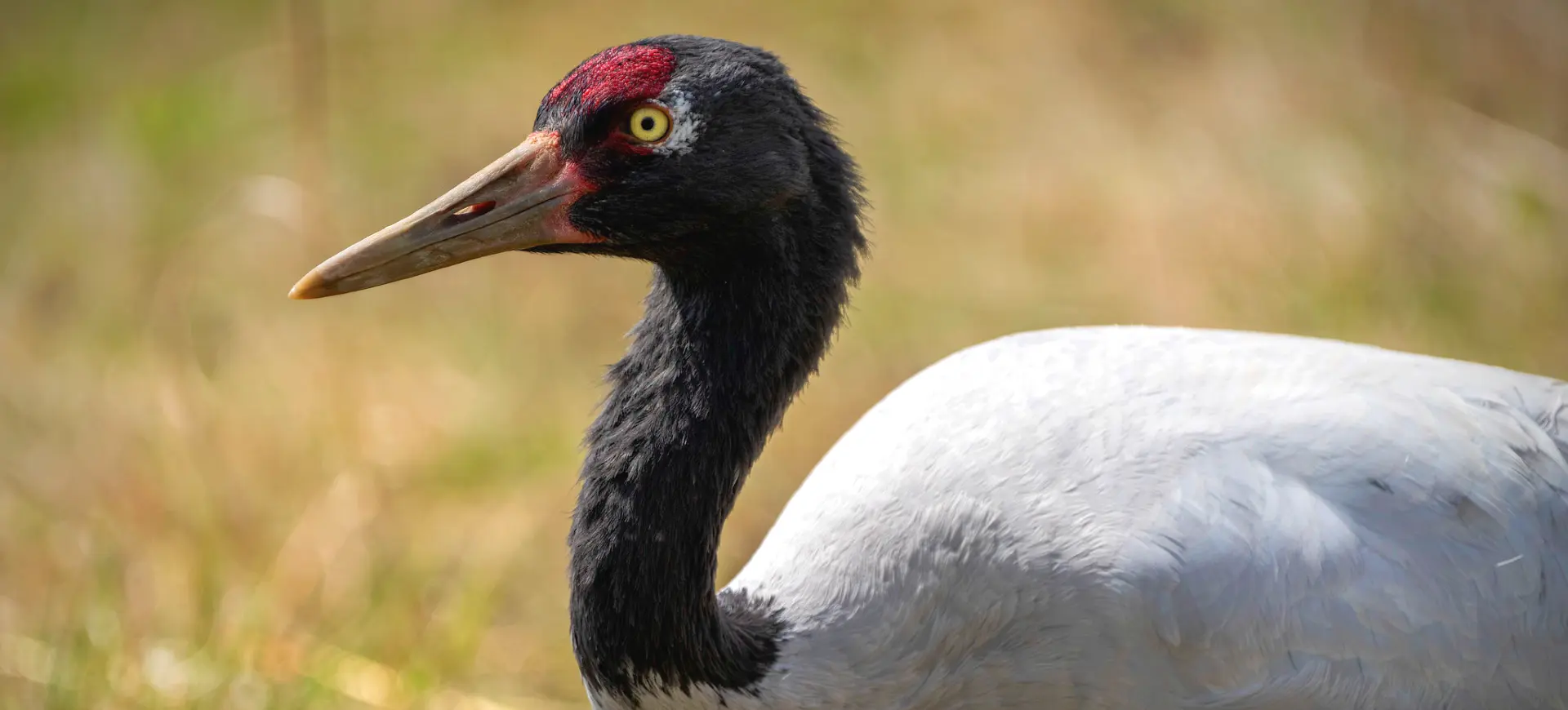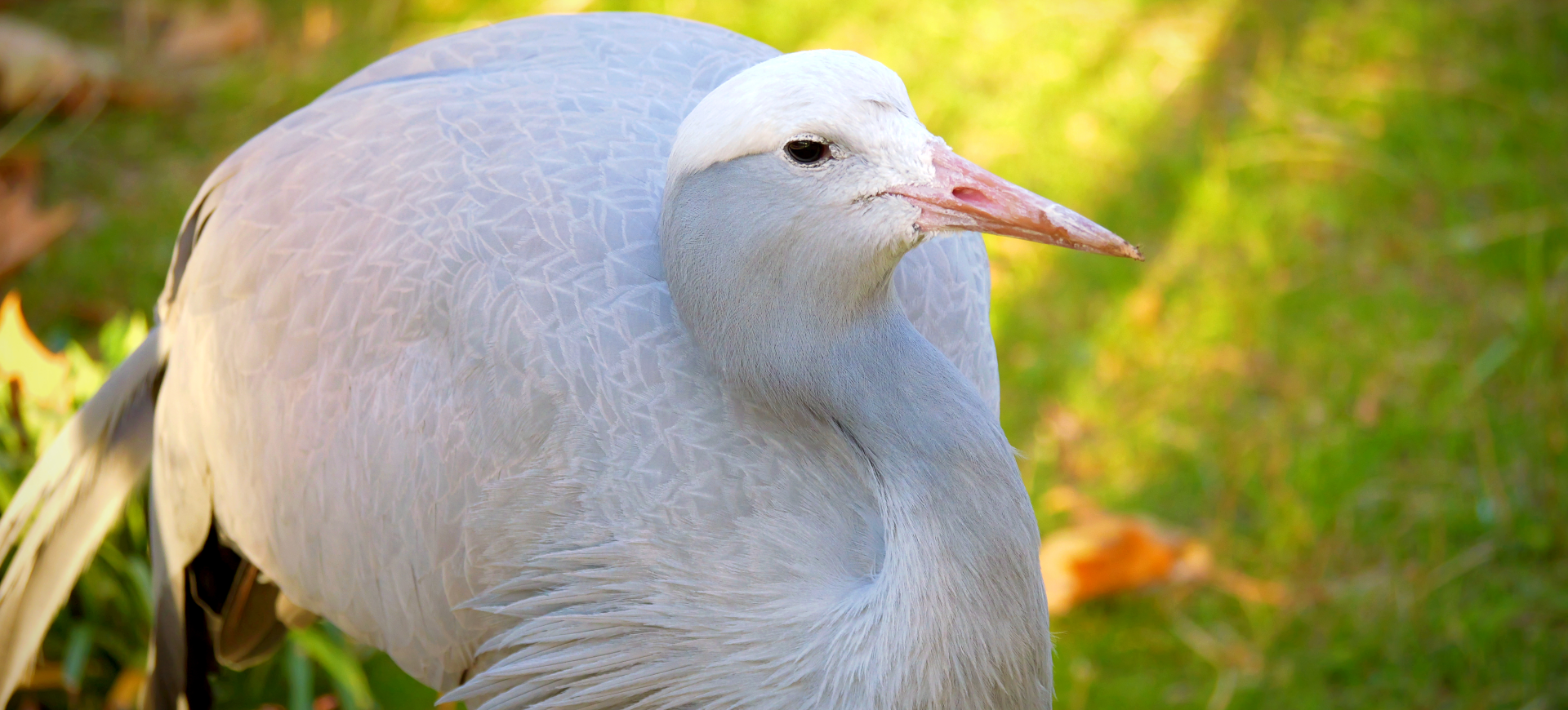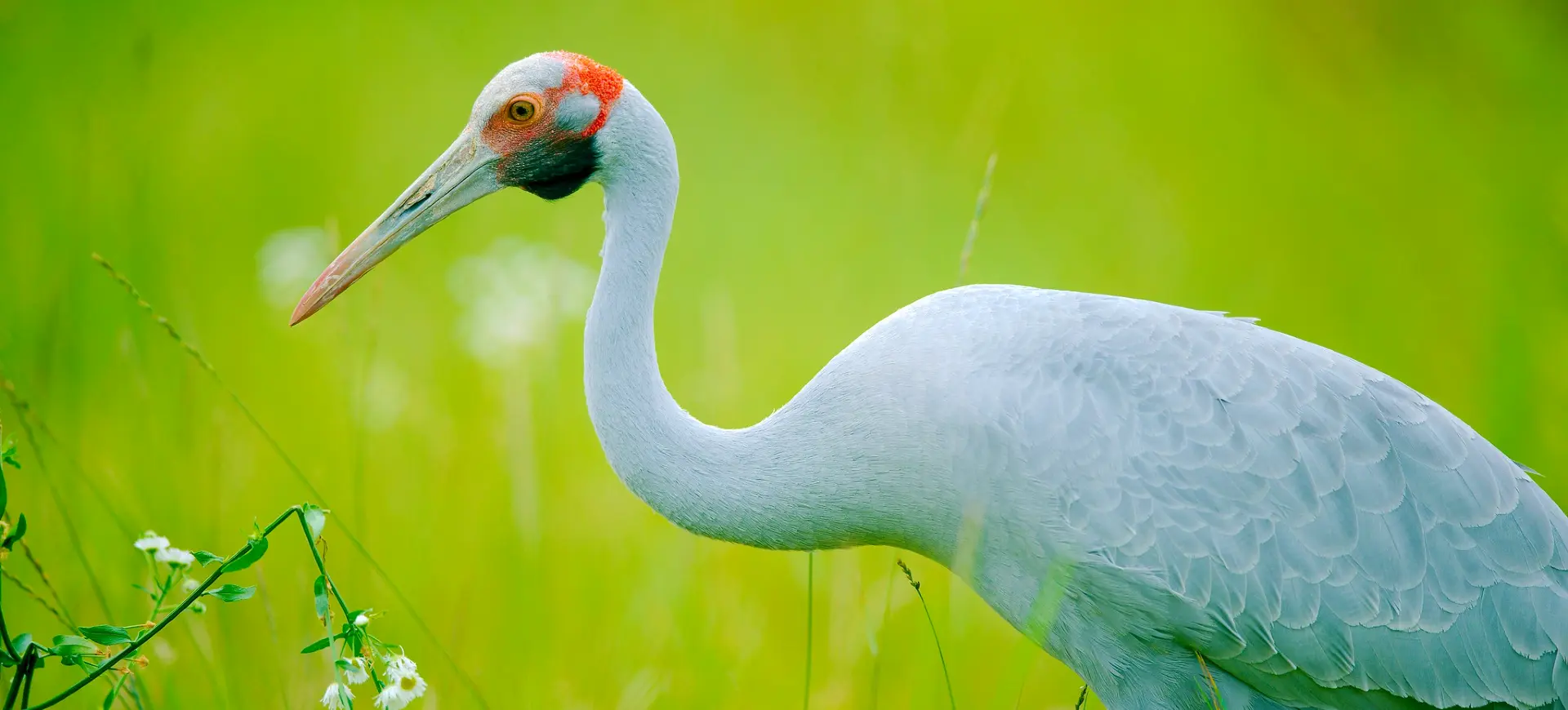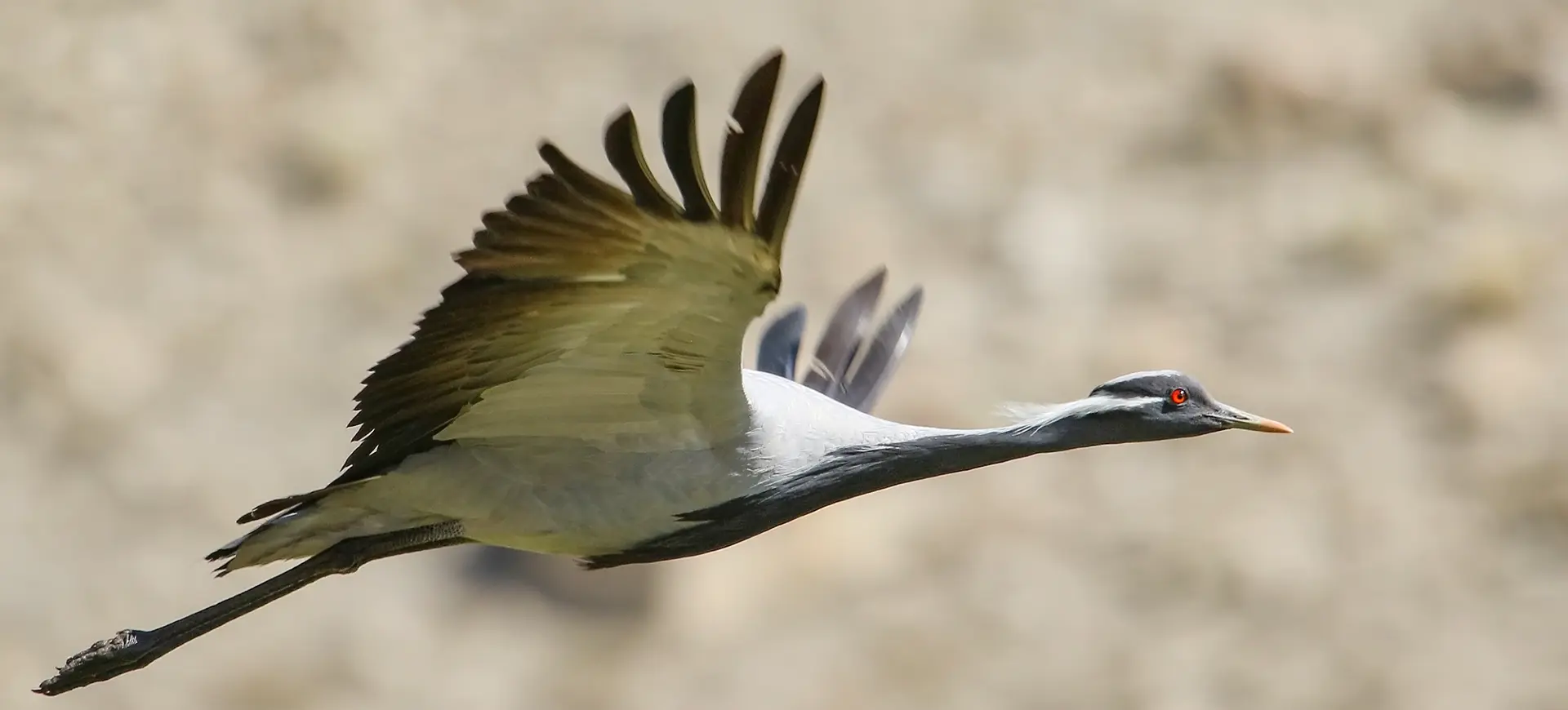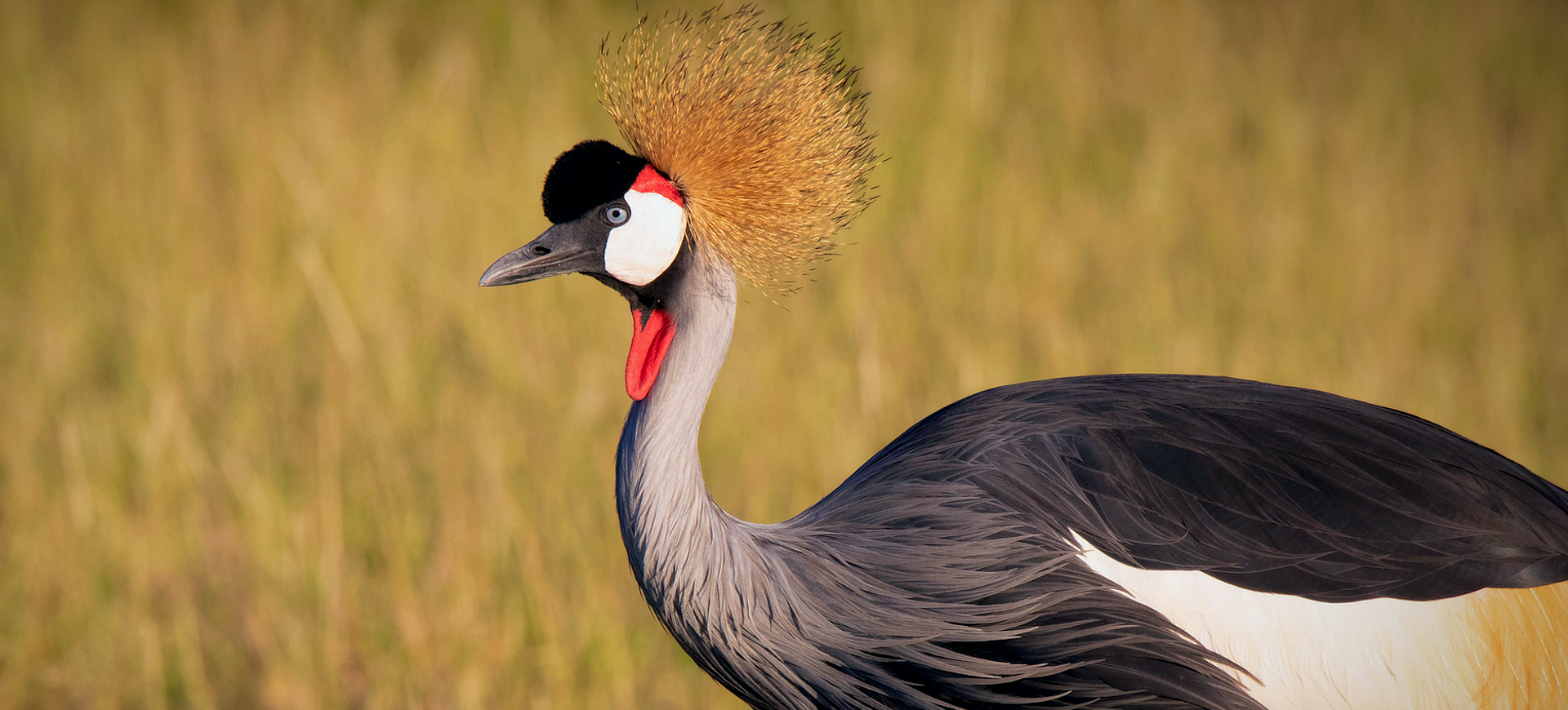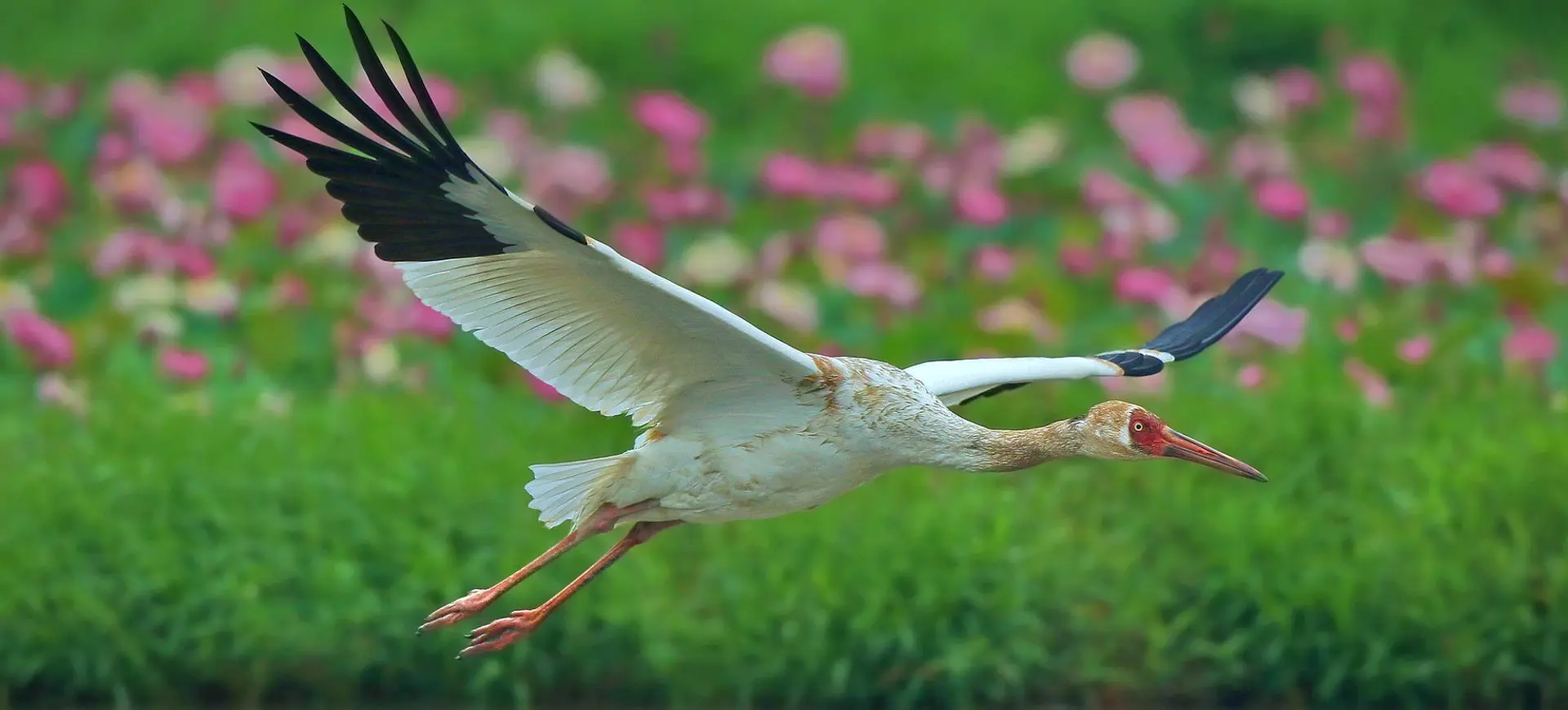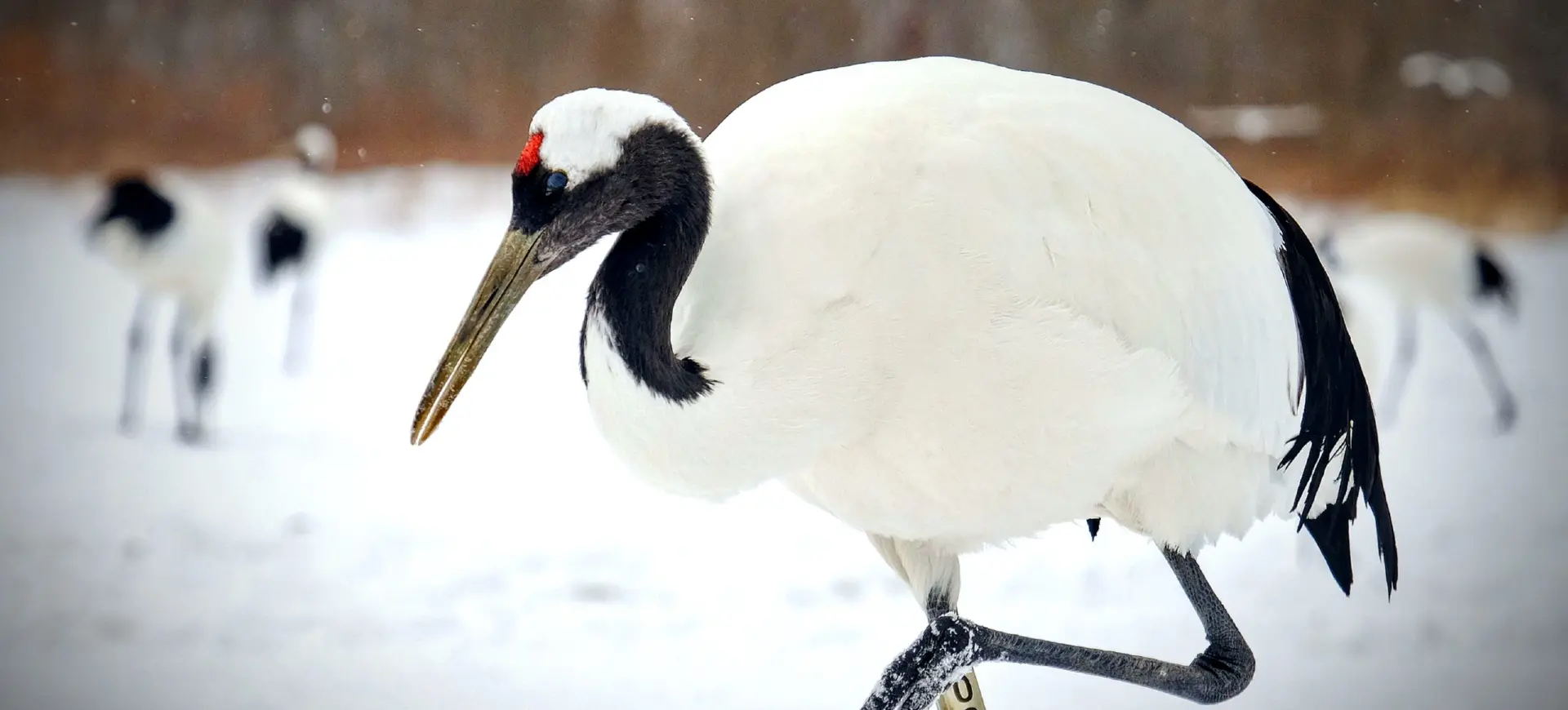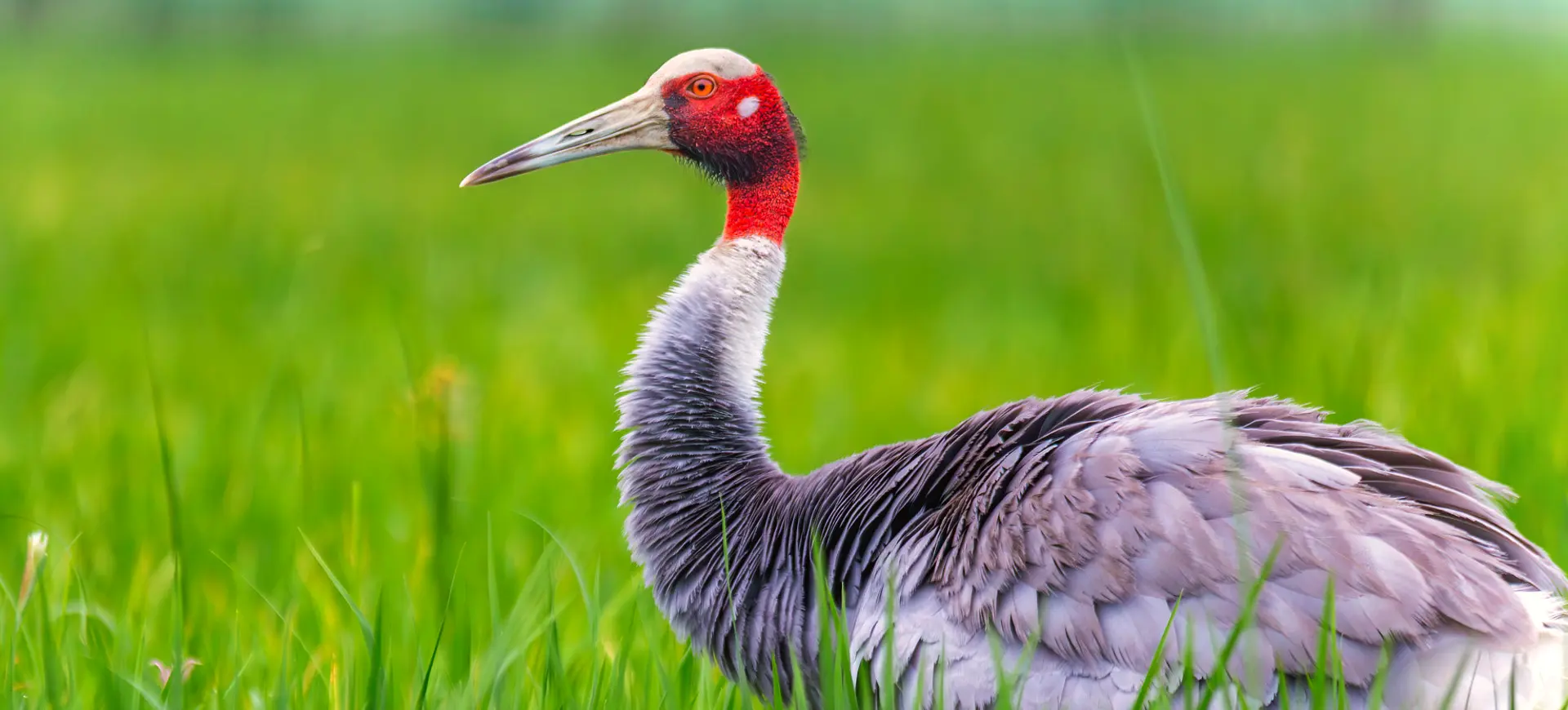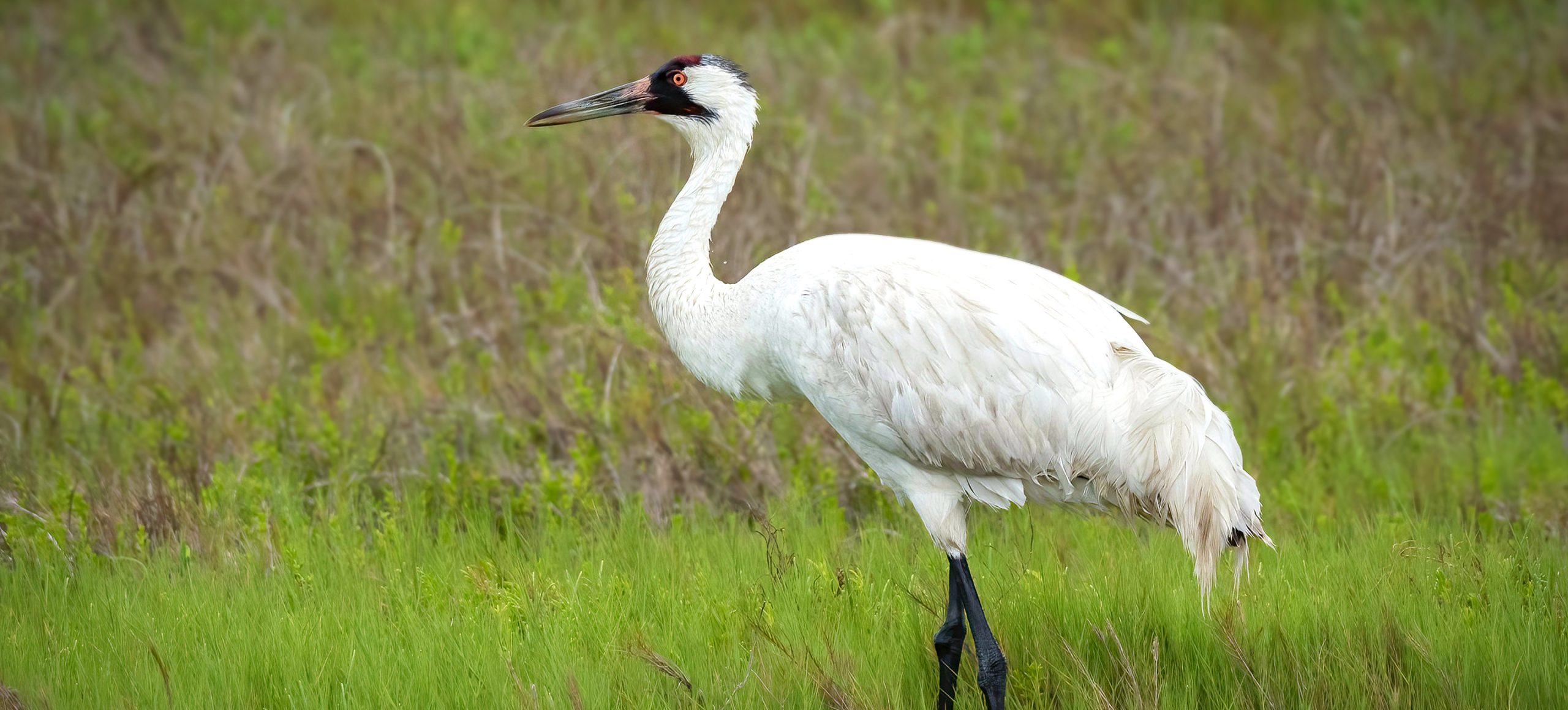Overview
The Sandhill Crane, scientifically named Antigone canadensis, is a large North American bird known for its graceful presence and intriguing behaviors. Its long legs, neck, and distinctive red forehead characterize it. Its body is mainly gray, with varying shades, and during the breeding season, the plumage can appear rust-colored due to mud staining. Sandhill Cranes are well-known for their elaborate dancing displays involving wing flapping, bowing, and leaping into the air.
These cranes are among the oldest living bird species, with fossil records dating back millions of years. They are highly social birds, often seen in large flocks, especially during migration. The Sandhill Crane is famous for its long-distance migrations, with some populations traveling from the Arctic to as far south as Mexico. During migration, they are known for their spectacular use of thermals to travel vast distances.
Sandhill Cranes have diverse vocalizations, with their loud, trumpeting calls being a distinctive feature. These calls are crucial in communication, especially during mating rituals and territorial defense. The crane’s omnivorous diet consists of plants, insects, and small animals, which they forage in wetlands, grasslands, and agricultural fields.
Taxonomy
Kingdom
Phylum
Class
Order
Family
Genus
Species
Sub Species
Type
Physical Description:
Sandhill Cranes are large birds, standing up to 4-5 feet tall, making them one of the tallest birds in North America. Their wingspan can reach 6 to 7 feet, which aids in their long migratory flights. Their bodies are slender, with long legs and necks, typical of crane species. The gray plumage is often stained with mud, which they apply with their beaks, giving them a rust-colored hue during the breeding season.
The most striking feature of a Sandhill Crane is its bright red forehead, white cheeks, and long, sharp bill. The eyes are piercing and express alertness. Juvenile cranes are similar in shape but have a more mottled or brownish plumage. Sandhill Cranes’ plumage is beautiful and serves as excellent camouflage in their natural habitats.

Lifespan: Wild: ~20 Years || Captivity: ~30 Years

Weight: Male: 6.5-14 lbs (3-6.3 kg) || Female: 5.5-12 lbs (2.5-5.5 kg)

Length: Male & Female: 31.5-47.2 in (80-120 cm)

Height: Male & Female: 43-48 in (109-122 cm)

Wingspan: Male & Female: 73-87 in (185-221 cm)

Top Speed: 35 mph (56 km/h) in flight
Characteristic:
Native Habitat:
Sandhill Cranes inhabit various habitats, including wetlands, marshes, grasslands, and agricultural fields. They prefer open areas where they can easily spot predators and forage for food. During the breeding season, they are often found in wet meadows, marshes, and river basins, where they build their nests.
These cranes are well adapted to different environments, from arid grasslands to wet marshes. Their ability to exploit a range of habitats is one of the reasons for their wide distribution and relative abundance compared to other crane species. Sandhill Cranes also utilize stopover habitats during their long migrations, which are crucial for resting and feeding.
Climate Zones:
Biomes:
Biogeographical Realms:
Continents:
Countries:
Diet:
Diet & Feeding Habits:
Sandhill Cranes have an omnivorous diet, feeding on various plant and animal matter. They forage in shallow wetlands, fields, and grasslands, using their long bills to probe for food. Their diet includes seeds, grains, berries, insects, small mammals, amphibians, and occasionally reptiles.
Sandhill Cranes require high-protein food during breeding and nesting periods to sustain themselves and their chicks. This increases the consumption of insects, snails, worms, and other small animals. They are also known to forage in agricultural fields, feeding on crops like corn and wheat, sometimes leading to conflicts with farmers.
Mating Behavior:
Mating Description:
Sandhill Cranes are known for their lifelong monogamous bonds, with pairs staying together year after year. Their courtship rituals are elaborate and beautiful, involving synchronized dancing, bowing, and jumping. These displays strengthen the bond between the pair and are used in territory defense.
The breeding season varies depending on their location but typically occurs in the spring. Nesting sites are usually in shallow wetlands, where the pair constructs a large nest from available vegetation. The female usually lays two eggs, and both parents are responsible for incubating and caring for the chicks once they hatch.
Reproduction Season:
Birth Type:
Pregnancy Duration:
Female Name:
Male Name:
Baby Name:
Social Structure Description:
Sandhill Cranes are social birds, often seen in large flocks, especially during migration. These flocks can number in the thousands, providing safety in numbers from predators. Outside of the breeding season, they roost in large groups in shallow waters, which offers protection from predators.
During the breeding season, they become more territorial and are usually seen in pairs or small family groups. Parental care is strong in Sandhill Cranes, with both parents involved in raising the young. The social structure of these cranes plays a crucial role in their survival, particularly during migration and in predator-rich environments.
Groups:
Conservation Status:
Population Trend:
The global population of Sandhill Cranes is considered stable, with some regional fluctuations. Their populations have increased in some areas due to successful conservation efforts and habitat management. However, habitat loss and degradation remain a concern, particularly in their breeding and wintering grounds.
Conservation efforts and population monitoring are ongoing to ensure the species’ continued stability. The Sandhill Crane is a popular bird among birdwatchers and wildlife enthusiasts, which has helped garner support for its conservation.
Population Threats:
The primary threats to Sandhill Cranes include habitat loss and degradation due to agricultural expansion, urban development, and wetland drainage. Collisions with power lines and wind turbines are significant threats, particularly for migratory populations. Additionally, climate change poses a long-term threat by altering their habitats and affecting food availability.
Sandhill Cranes are considered agricultural pests in some areas, leading to conflicts with farmers. This sometimes results in lethal control measures, which can impact local populations. Efforts to mitigate these conflicts through non-lethal means are important for their conservation.
Conservation Efforts:
Conservation efforts for Sandhill Cranes include habitat protection and restoration, particularly in key breeding and wintering areas. Wetland conservation and management are crucial for their survival, as these are their primary habitats. Educational programs and policies to reduce collisions with power lines and wind turbines are also implemented in some regions.
Research and monitoring programs help understand their population dynamics and the effectiveness of conservation strategies. Community involvement and eco-tourism related to crane watching have also raised awareness and supported conservation efforts.
Additional Resources:
Fun Facts
- Sandhill Cranes have a remarkable fossil history, with some records dating back over 2.5 million years, making them one of the oldest living bird species.
- These cranes are famous for their elaborate dancing behaviors, which include bows, leaps, and wing flapping, and are part of their courtship and social interactions.
- Sandhill Cranes can fly at high altitudes during migration, sometimes reaching 10,000 feet (3,048 meters).
- Sandhill Cranes can live up to 20 years in the wild, and some individuals in captivity have lived for over 30 years.
- They are known for their loud, rattling, bugle-like call, which can carry several kilometers and is a distinctive sound of the North American wetlands.
- Sandhill Cranes are monogamous and often mate for life, showing strong pair bonds with their partners.
- The bright red patch on their forehead is bare skin, and its intensity can change with the bird’s emotional state.
- Their omnivorous diet includes plants, grains, insects, small mammals, and amphibians, showcasing their adaptability to different food sources.
- Some populations of Sandhill Cranes undertake extensive migrations from their breeding grounds in the Arctic and northern Canada to wintering sites in the southern United States and Mexico.
- Both male and female cranes share responsibilities in raising their young, including incubation and teaching the chicks to feed.











